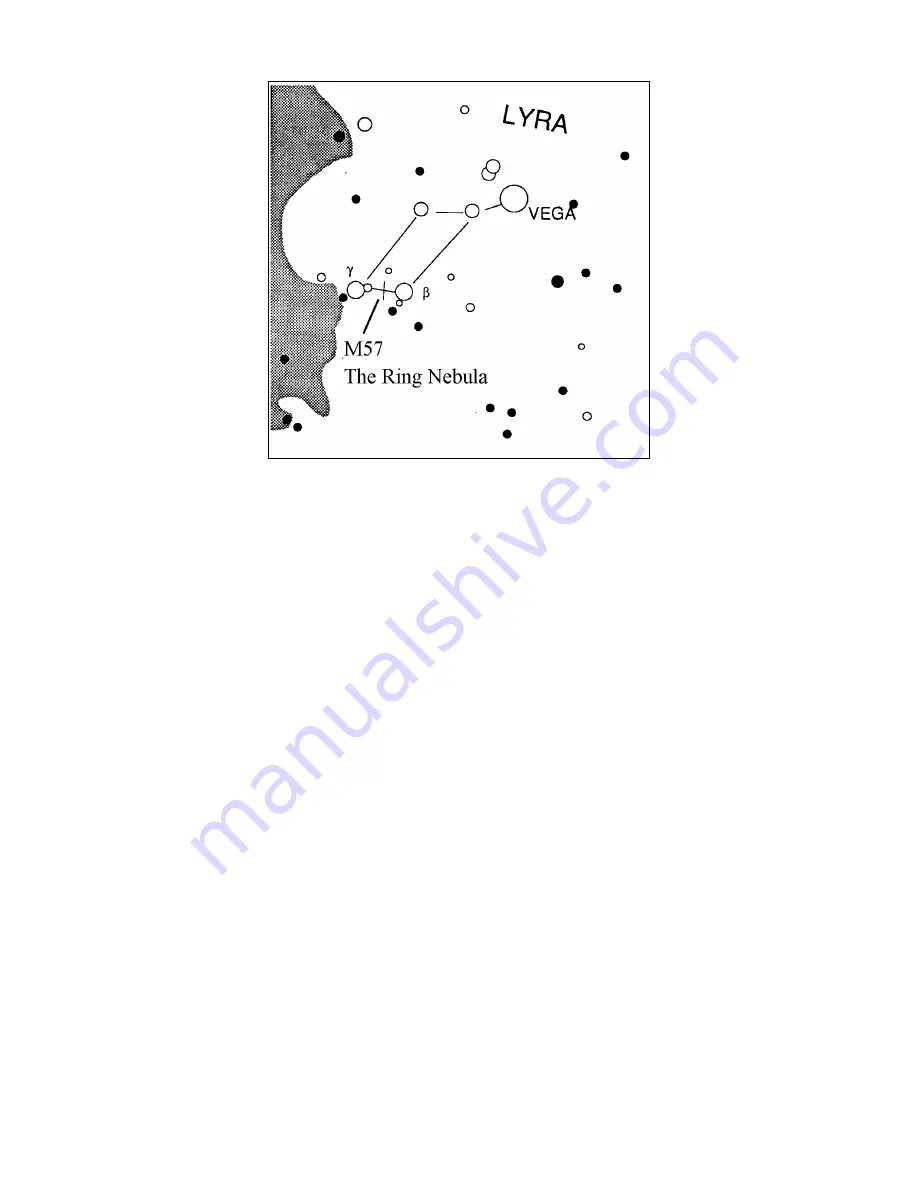
20
Figure 16
Although the Ring Nebula lies between two “naked eye” stars, it may take a little time to locate because it
isn’t visible in a finderscope. Note that the scale for this star chart is different from that of the chart on the
previous page, which shows several constellations, including Pegasus, Triangulum and Andromeda.
“Seeing” Conditions
Viewing conditions affect what you can see through your telescope during an observing session.
Conditions include transparency, sky illumination and “seeing”. Understanding viewing conditions and the
affect they have on observing will help you get the most out of your telescope.
Transparency
Transparency refers to the clarity of the atmosphere and is affected by clouds, moisture, dust and other
airborne particles. Thick cumulus clouds are completely opaque, while cirrus clouds can be thin, allowing
light from the brightest stars through. Hazy skies absorb more light than clear skies, making fainter
objects hard to see and reducing contrast on brighter objects. Dust particles and gases ejected into the
upper atmosphere from volcanic eruptions also affect transparency. Ideal conditions are when the night
sky is inky black.
Sky Illumination
General sky brightening caused by the moon, aurorae, natural airglow and light pollution greatly affect
transparency. While not a problem when viewing brighter stars and planets, bright skies reduce the
contrast of extended nebulae, making them difficult, if not impossible, to see. To maximize your
observing, limit deep-sky viewing to moonless nights, far from the light polluted skies found around major
urban areas. Light Pollution Reduction (LPR) filters enhance deep-sky viewing from light polluted areas
by blocking unwanted light, while transmitting light from certain deep-sky objects. Planets and stars can
still be observed from light pollued areas or when the moon is out.






















